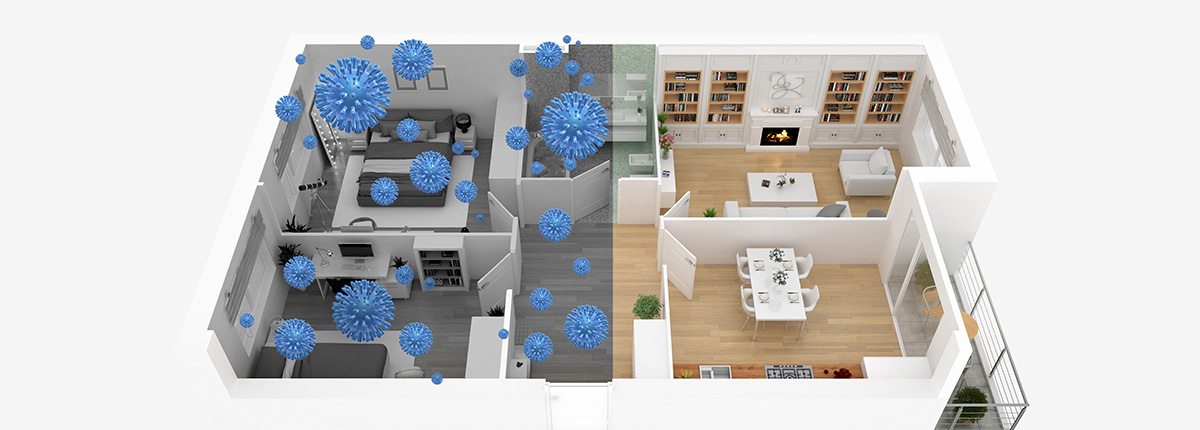How to remove some of the hordes of germs at home and keep certain virus and certain bacteria from spreading
Table of Contents
- What viruses and bacteria live in the home?
- Airborne viruses and bacteria
- Adhered viruses and bacteria
- The dirtiest place in the house
- Kitchen
- Bathroom
- Living areas
- Bedroom - How long do germs live on surfaces?
- Cold viruses
- Flu viruses
- COVID-19 virus
- Streptococcal bacteria
- Stomach viruses and bacteria
- MRSA - nanoe™ X is able to inhibit certain virus and certain bacteria
What viruses and bacteria live in the home?
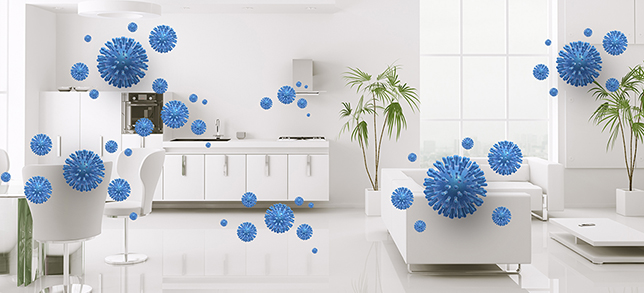
Unfortunately, we have unwelcome guests who are living right under our very noses.
We do our best to keep our homes clean, thinking that we’re completely safe. But the reality is that there can be many viruses, bacteria and other contaminants lurking around every corner, in every crevice, and on every surface of our homes*1.
It feels invasive to say the least. But who exactly are these unwelcome guests? And how can we remove them from our homes?
Airborne viruses and bacteria
These germs at home don’t just reside on surfaces – they can linger in the air too. They spread through micro-droplets, produced through talking, coughing and sneezing, which can then be inhaled or land on surfaces. This can spread infection and illness throughout the household. Airborne diseases include the common cold, influenza, whooping cough, measles, mumps and chickenpox*2.
Adhered viruses and bacteria
These microbes stick themselves to your personal items such as phones, keys, clothing and surfaces around the home. These are surfaces and objects that you come into contact with every day. By touching these, and then touching your eyes, nose and mouth, the pathogens enter your body and can then cause an infection or sickness*3.
*1 https://www.healthline.com/health/germy-places
*2 https://www.healthline.com/health/airborne-diseases#types
*3 https://www.taiho.co.jp/chc/brand/efil/en/bacteria
The dirtiest place in the house
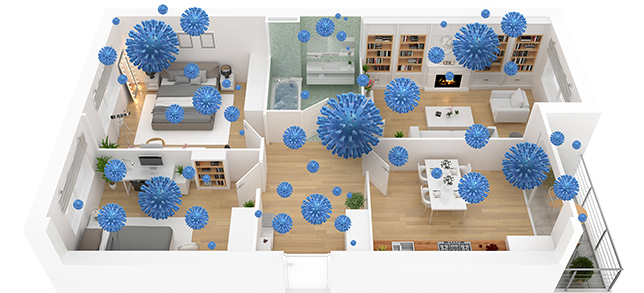
How clean do you think your kitchen is? Or your bedroom? You’d be surprised at how dirty these places in the home can be.
Kitchen
Your toilet bowl might be cleaner than your kitchen sink*4. This is because many of us tend to simply rinse the kitchen sink instead of disinfecting it. Illness-causing faecal bacteria, salmonella and E. coli make their home in the sink. But how do they get there in the first place? They can come from uncooked meat and food particles from plates that are washed in the sink. Additionally, the damp environment makes it an ideal home for bacteria. And that’s not all.
The dirtiest parts of your kitchen might actually be the tools that you use to clean it. Sponges, for dishes or for general kitchen cleaning, are moist habitats for unfriendly bacteria. The trouble is that we then use the sponges on surfaces (as well as dishes) around the kitchen – spreading these pathogens around.
How do we get rid of them? Wash your sink once a day with disinfectant and water. Remove bacteria from your sponge by putting it in the microwave for one minute. You can also use disinfectant wipes on kitchen countertops to clean them.
Bathroom
We expect germs in the bathroom. But where exactly do they hide? You might not expect faecal bacteria to live on your toothbrush. Every time you flush the toilet, bacteria and viruses fly in the air and some land on your toothbrush. Make sure you replace your toothbrush regularly, and keep it somewhere dry – further away from the toilet. You can also clean it in the dishwasher.
Some dangerous varieties of bacteria that cause MRSA can occasionally make their home in hand towels, which make comfortable, damp homes for them*5. Bacteria also reside in the bathtub. The solution is simple: wash hand towels regularly and clean your bathtub with disinfectant. It’s also a good idea to use disinfectant on surfaces and handles around the bathroom.
Living areas
While you might go to the living room to relax and unwind after a long day, you’ll find that you’re relaxing alongside a community of germs. A possibly unsurprising hiding spot is the TV remote control. Everyone uses it, so it’s natural that it will house the most germs. What might be surprising is that a lot of remotes are actually home to cold viruses. Wash your hands regularly and use disinfectant wipes on the remote to get rid of these germs.
Bedroom
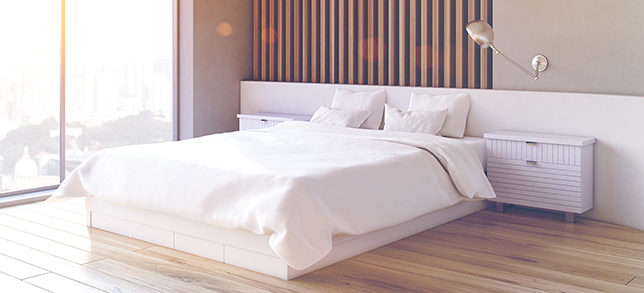
Bedrooms are safe havens to retreat to. So it can be unsettling to think that they can also be home to bacteria*6. Carpets have hundreds of thousands of bacteria breeding within them. Not to mention that your bed sheets and pillows can also be covered in bacteria. The good news is that they’re usually harmless – but it’s good practice to wash these items at least once a week.
Wash your pyjamas every three days too, since they can harbour bacteria like E. coli. To keep your bedroom bacteria-free, let in sunlight, disinfect surfaces regularly, ventilate your room daily and refrain from eating there.
*4 https://www.webmd.com/women/features/places-germs-hide
*5 https://www.aarp.org/home-garden/home-improvement/info-03-2011/germs-in-your-house
*6 https://www.thehealthy.com/home/germiest-spots-in-bedroom
How long do germs live on surfaces?
While germs don’t live forever, they can last a fair amount of time on surfaces. Let’s take a look at different kinds of viruses and bacteria:
Cold viruses
Cold viruses can survive up to seven days and prefer surfaces like plastic. They don’t last that long on softer materials such as tissues. The good news is that they are only infectious for 24 hours*7.
Flu viruses
Flu viruses can last between 24-48 hours on hard surfaces like stainless steel and plastic; but, similarly to cold viruses, they can only last 8-12 hours on softer surfaces*8.
COVID-19 virus
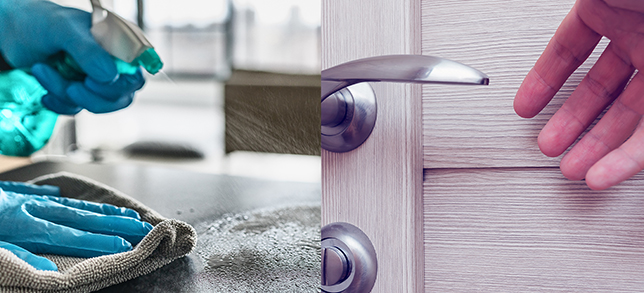
The coronavirus survives a differing amount of time depending on the type of surface*9:
- Copper – 4 hours.
- Cardboard – 24 hours.
- Wood – 2 days.
- Plastic – 3-7 days.
- Stainless steel – 3-7 days.
- Paper – 4 days.
- Glass – 4 days.
Streptococcal bacteria
These bacteria can cause a range of different infections – from strep throat through to scarlet fever*10.
On dry surfaces they can last from 3 days to over 6 months*11.
Stomach viruses and bacteria
These kinds of viruses and bacteria can be quite durable. For example, the norovirus – a common cause of stomach bugs – can last up to two weeks on hard surfaces and a few months – or possibly years – in still water*12.
MRSA
MRSA stands for Methicillin-resistant Staphylococcus Aureus*13. These bacteria can cause infections on the skin or in the lungs. Treatment is needed immediately if it’s contracted, since MRSA can lead to sepsis which may be life-threatening. MRSA bacteria survive on surfaces from a few hours to a few weeks.
*7 https://nortonchildrens.com/news/how-long-does-the-cold-virus-live-on-surfaces
*8 https://pubmed.ncbi.nlm.nih.gov/6282993
*9 https://www.healthline.com/health/how-long-does-coronavirus-last-on-surfaces#different-surfaces
https://www.thelancet.com/journals/lanmic/article/PIIS2666-5247(20)30003-3/fulltext
*10 https://www.cdc.gov/groupastrep/diseases-public
*11 https://www.canada.ca/en/public-health/services/laboratory-biosafety-biosecurity/pathogen-safety-data-sheets-riskassessment/streptococcus-pyogenes
*12 https://nortonhealthcare.com/news/how-long-does-norovirus-live-on-surfaces/
*13 https://www.cdc.gov/mrsa/community/environment
nanoe™ X inhibits certain virus and certain bacteria
Knowing that your home is filled with all these bacteria and viruses can be a cause for concern. But you don’t have to worry – there’s an easy way to stop some of these germs along with the good cleaning habits suggested above. In addition, nanoe™ X releases hydroxyl radicals into the air; these marvellous molecules inhibit certain viruses and certain bacteria by up to 99%*14 in the air as well as on surfaces. Your home should be a place where you can relax and feel safe. nanoe™ X helps create this environment where you can do just that – letting you breathe easy.
